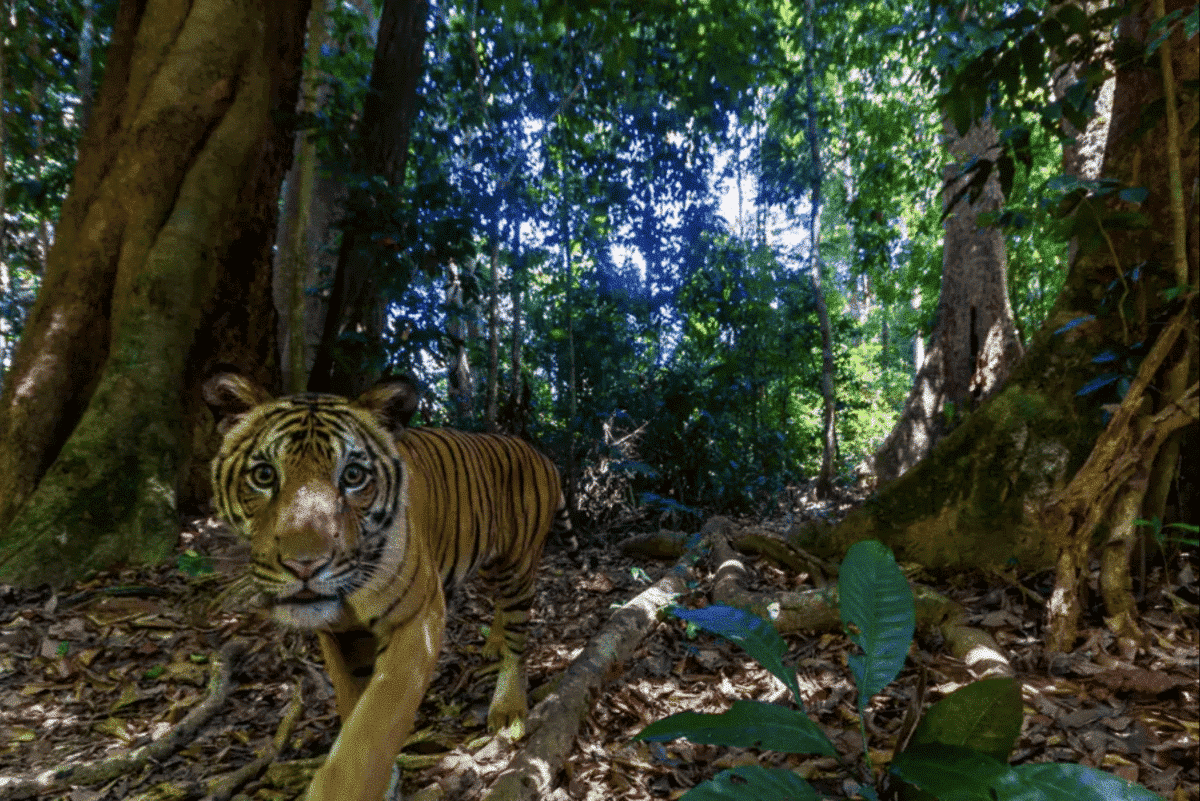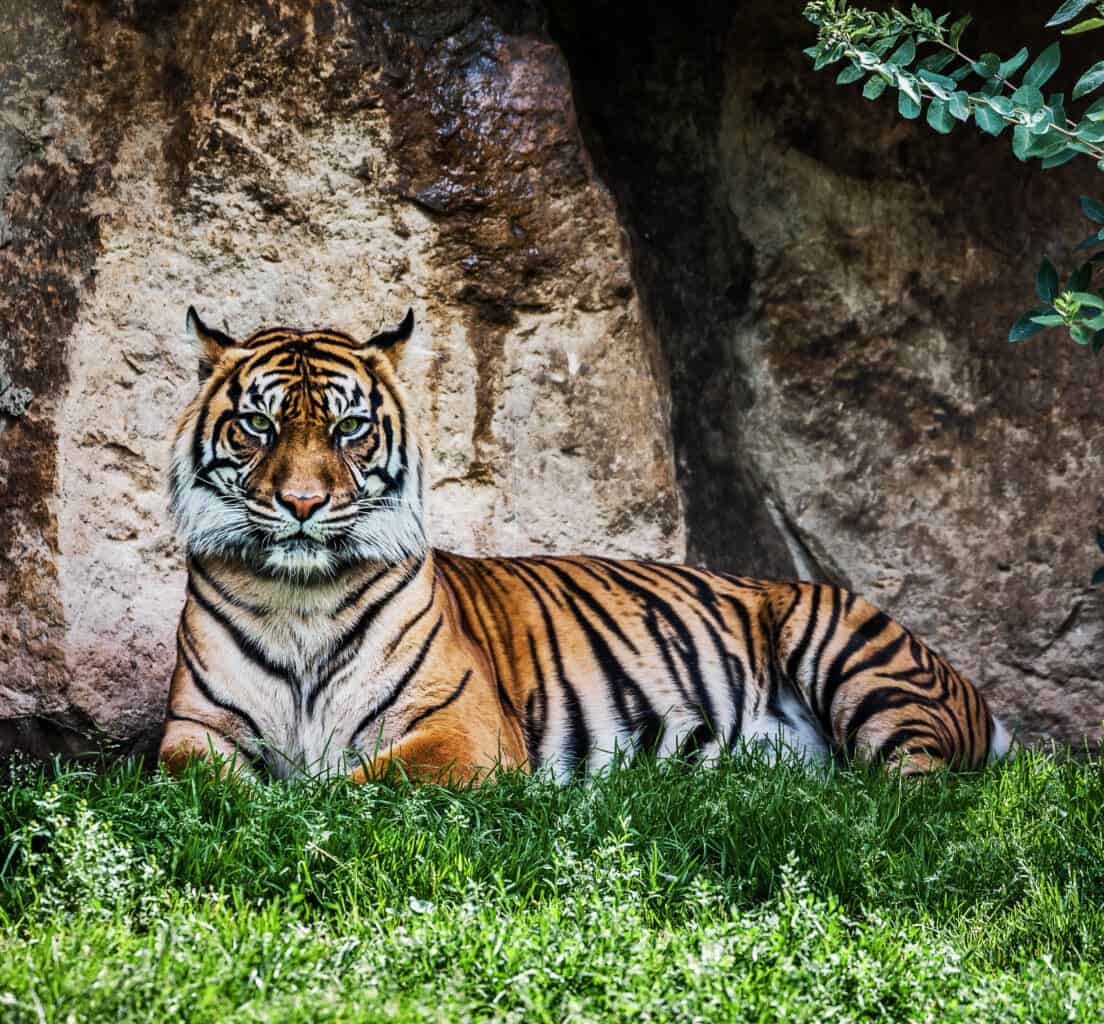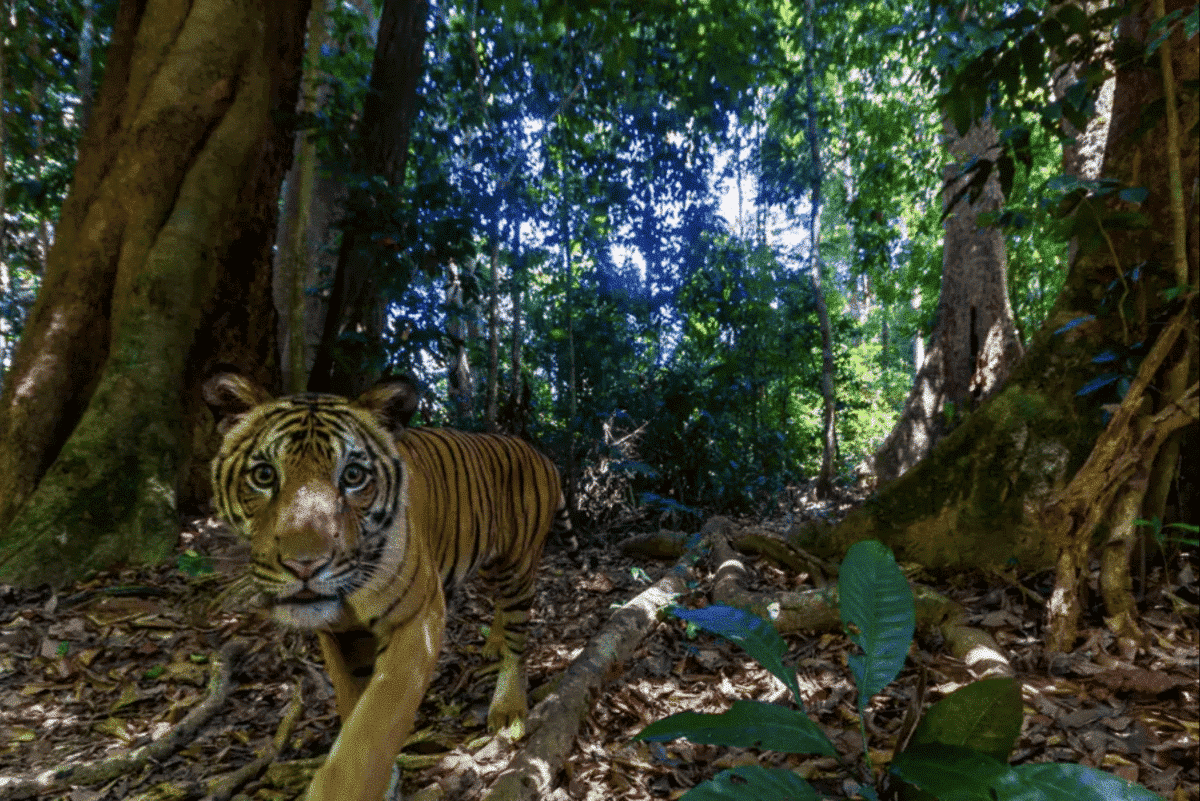From Tigers to Orangutans, Malaysia, which is the 66th largest country in the world – covering a staggering 330,803 km² – is home to an array of majestical animals, of which, the Malayan Tiger is renowned for being the most elusive. And with only 150 left, compared to 3000 in the 1950’s, it’s easy to understand why.

Located in South-East Asia, bordering the picturesque coasts of Thailand and Indonesia, Malaysia is one the world’s biggest distributors of palm oil and cacao; a conservationist’s worst nightmare because extensive deforestation is required for global distribution. Many believe this has led to the rapid decline of Tigers.
In an attempt to rejuvenate a critically endangered tiger population, the Malaysian government have partnered with indigenous communities and leading conservation organizations like the WWF to counteract poaching and ensure their native tigers prosper rather than collapse.
Did You Get My Good Side? Photo of a Malayan Tiger
Installing hidden cameras within the countries dense forest is one of the measures made to monitor the number of big cats within it’s beautiful terrain; and the results have been stunning. Below shows a fascinating photo of a Malayan Tiger roaming through Royal Belum State Park, situated around 400km north of Kuala Lumpur.

What Malayan Tigers Eat
Tigers, including the elusive Malayan Tiger, are carnivorous predators with a diverse diet. Their menu primarily consists of large ungulates such as deer and wild boar. Additionally, they may target smaller mammals like monkeys and porcupines. Tigers are opportunistic hunters, and their dietary preferences can vary based on the availability of prey in their habitat.
Despite their fearsome reputation, tigers are not always successful in their hunts. Their success rate is estimated to be around 10-20%, highlighting the challenges they face in securing a meal in the wild. The decline in prey availability due to habitat loss further compounds the difficulties faced by these majestic creatures.
Where They Roam
Malayan Tigers, like their counterparts, inhabit a variety of ecosystems, ranging from dense forests to mangrove swamps. They are known for their territorial behavior and mark their territories with scent markings and vocalizations. These territories can span large areas, providing tigers with ample space to hunt and roam.

The Royal Belum State Park, where the captivating photo was captured, serves as a vital habitat for these tigers. The park’s diverse landscape, including dense forests and pristine waterways, offers a suitable environment for the Malayan Tiger to thrive. Conservation efforts that preserve such habitats are crucial for the survival of these magnificent creatures.
Hunting Tactics
Tigers are renowned for their stealth and ambush tactics when hunting. They rely on their keen senses of sight and hearing to locate prey, often stalking it patiently before launching a powerful and swift attack. The Malayan Tiger, specifically, adapts its hunting strategies to the dense forests it calls home, utilizing the cover of vegetation to approach its unsuspecting prey.

Conservation initiatives not only aim to protect tigers from external threats but also focus on preserving the ecosystems that sustain their prey. By safeguarding the natural balance of these habitats, efforts are made to ensure that tigers can continue to exhibit their natural behaviors and contribute to the ecological health of their surroundings.
Join our Forum for free today!

- Second American Killed by Elephant in Zambia This Year - July 22, 2024
- Elderly Man Kills Grizzly Bear in Montana - July 22, 2024
- Missing Cat Found Weeks Later, 40 Miles Away - July 21, 2024

